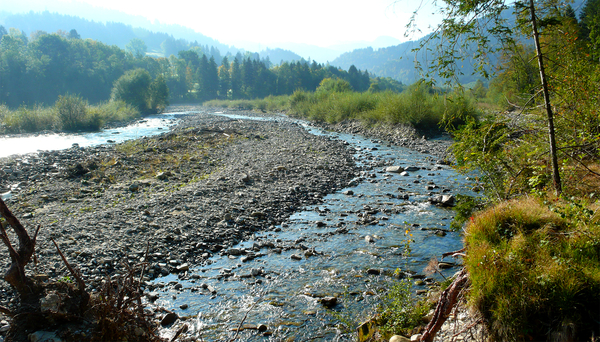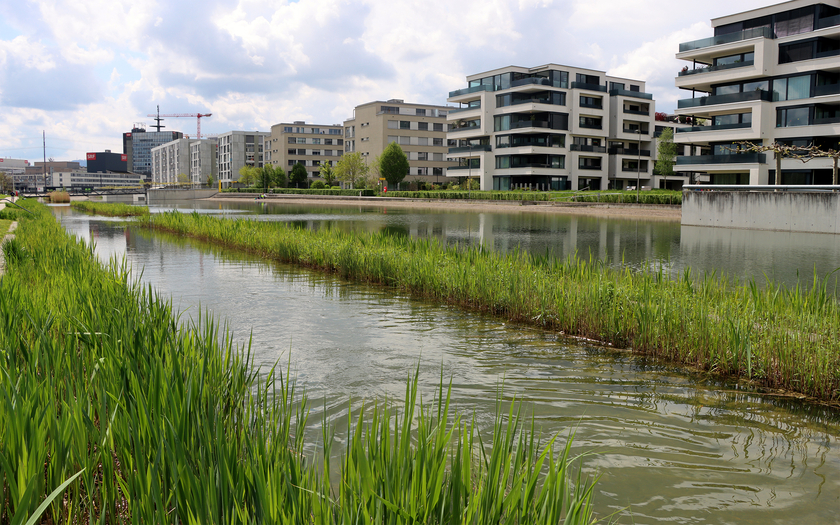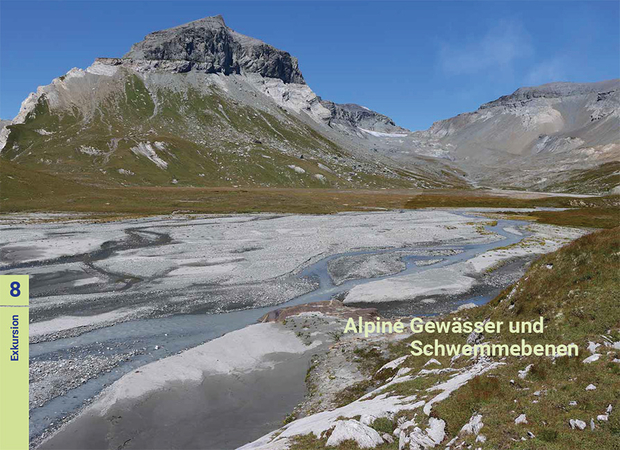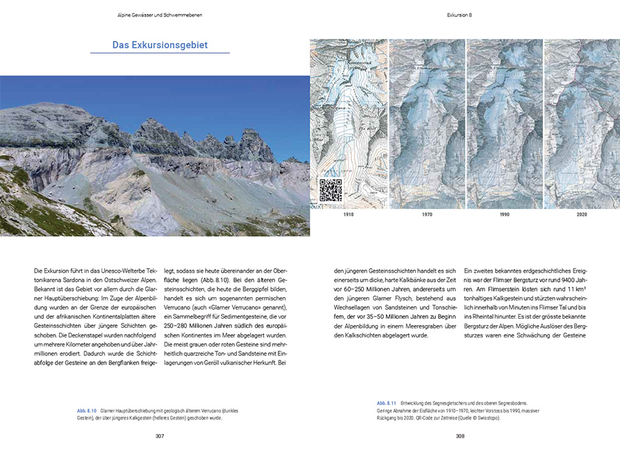News Detail
New book: Biodiversität zwischen Wasser und Land
May 7, 2024 |
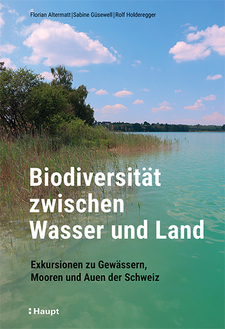
The new book “Biodiversität zwischen Wasser und Land” (Biodiversity between Water and Land, only available in German) is an active aid for exploring life at the interface of blue (water) and green (land) habitats. Florian Altermatt, Sabine Güsewell and Rolf Holderegger guide the reader through eight excursions from groundwater and spring habitats in the Jura, Alpine floodplains, moors and woodlands in the Alpine foothills, lakeshores and siltation zones in the midlands to blue-green habitats in residential areas.
Where blue-green diversity flourishes
“Where aquatic and terrestrial habitats converge, pervading and enriching each other, you find an incredible diversity of lifeforms,” states Florian Altermatt, head of the Eawag Spatial Dynamics research group and professor at the University of Zurich. “Not only are there countless species and habitats to discover, but many functions and processes as well.” These include food webs, substance flows, protective functions from natural hazards and water purification processes.
The excursions show how to seek out the various types of springs and their inhabitants in the karst (limestone) landscape. Along the trails you can observe the siltation of lakes and the diverse mosaic of blue-green habitats such as lowland and highland moors, wetland meadows and forest mires. With a little luck, you might just spot the beaver’s calling card of gnawed tree trunks, and perhaps the busy builder itself at work on a dam. The book's explanations lend new significance to cyanobacterial colonies (tintentstriche) in glacial areas. Numerous photos also expose the subterranean life thriving in groundwater, such as the amphipod and animal and vegetable plankton, normally hard to see with the naked eye. Even cities and agglomerations offer important blue-green habitats for human recreation.
Blau-grüne Lebensräume erkennen, erhalten, fördern
Identifying, maintaining and supporting blue-green habitats
“As you walk along, though, you also see the influence of humans on the habitats between water and land, like straightened rivers, hydroelectric power plants or the strict division between water and land along many lakeshores,” explains Rolf Holderegger, head of the WSL Biodiversity and Conservation Biology research unit and professor at the ETH Zurich. “Development can lead to wetlands being drained to become fields or floodplains to channelled rivers with dry hinterlands.”
This makes the dangers to the landscape visible and clear. Apart from the exchange and interaction of aquatic and terrestrial habitats, the book also illustrates the complex networks of the many interest groups, such as politics, energy producers, agriculturalists, conservationists and the general population. The book also explores possibilities for holistically protecting and maintaining the habitats between water and land, for example through promoting the dynamics in wetlands or by rewetting dried-out areas.
The book is intended for specialists, students and interested members of the public. The first section of the book introduces the theoretical principles. The main part of the book then presents eight excursions through characteristic “blue-green” landscapes, showing the ecological interactions and categorising the human usage.
Blue-Green Biodiversity research initiative
The book “Biodiversität zwischen Wasser und Land” has been produced as a part of the Blue-Green Biodiversity research initiative – a collaboration between Eawag and WSL studying biodiversity at the interfaces of aquatic and terrestrial ecosystems. The initiative is financed by the ETH Board. The book is available only in German.
Cover picture: Floodplains, like the Sense River near Plaffeien shown here, are some of the most diverse habitats in Switzerland. (Photo: Florian Altermatt, Eawag)
Original publication
Altermatt, F.; Güsewell, S.; Holderegger, R. (2024) Biodiversität zwischen Wasser und Land. Haupt Verlag, Bern.

